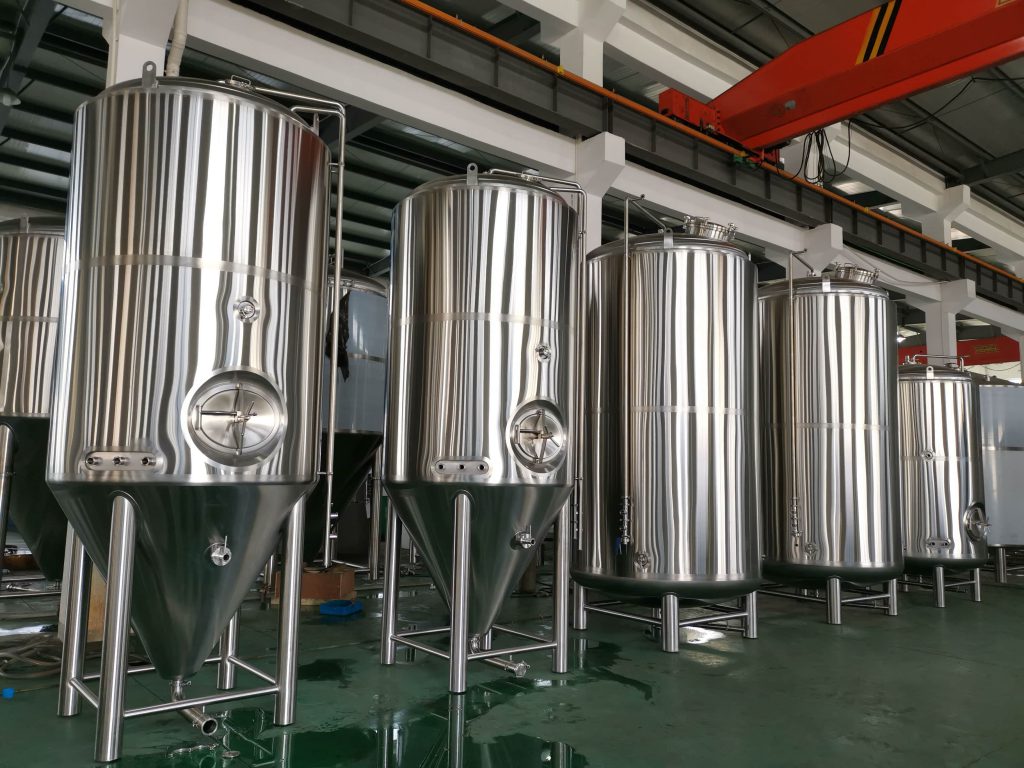Introduction

In the dynamic and meticulous world of brewing, the equipment utilized can significantly impact the final product. Among the array of brewing equipment, brewing tanks stand out as foundational components that directly influence the quality, consistency, and efficiency of the brewing process. This article delves deep into the pivotal role of stainless steel brewing tanks, exploring their myriad benefits, technical specifications, applications across different brewing stages, environmental implications, and addressing common queries to provide a comprehensive understanding.
Benefits of Stainless Steel Brewing Tanks
Stainless steel brewing tanks are revered for their exceptional qualities that cater specifically to the demands of brewing operations:
- Durability: The durability of stainless steel is unmatched in the brewing industry. It withstands the rigors of daily use, including temperature fluctuations and mechanical stress, without succumbing to corrosion or structural degradation. Brewers can rely on stainless steel tanks to maintain their integrity over extended periods, ensuring a long operational lifespan.
- Hygiene: Hygiene is paramount in brewing to prevent contamination and ensure the purity of the final product. Stainless steel’s non-porous surface prevents bacteria from adhering and proliferating, thereby maintaining stringent hygiene standards critical for producing high-quality brews consistently.
- Temperature Control: Precise temperature control is indispensable during various brewing stages, particularly fermentation and maturation. Stainless steel tanks excel in their ability to maintain stable temperatures, crucial for yeast activity and flavor development. This attribute ensures optimal conditions for the fermentation process, contributing directly to the flavor profile and quality of the brew.
- Ease of Cleaning: Efficient cleaning and sanitation procedures are imperative in breweries to prevent off-flavors and maintain product integrity. Stainless steel’s smooth surface facilitates easy cleaning, allowing brewers to thoroughly sanitize tanks between batches without leaving residues or compromising hygiene. This ease of maintenance not only enhances operational efficiency but also minimizes downtime between brew cycles.
- Customization: Brewing operations vary widely in scale and process requirements. Stainless steel tanks offer extensive customization options to accommodate diverse brewing needs, including batch size variations, specific process configurations, and integration with automated systems. Brewers can tailor tank specifications to optimize workflow efficiency and adapt to evolving production demands seamlessly.
Features and Specifications
Comparison of Stainless Steel vs. Other Tank Materials
| Feature | Stainless Steel Tanks | Other Tank Materials |
|---|---|---|
| Durability | High | Variable |
| Corrosion Resistance | Excellent | Varies |
| Hygiene | Excellent | Fair to Poor |
| Temperature Control | Excellent | Limited |
| Cleaning and Maintenance | Easy | Difficult |
| Customization Options | High | Limited |
Applications in Brewing
Stainless steel brewing tanks fulfill critical roles throughout the brewing process, contributing to the overall quality and consistency of the final product:
- Fermentation: During fermentation, stainless steel tanks provide a stable environment conducive to yeast activity, ensuring consistent fermentation kinetics and flavor development. The inert nature of stainless steel prevents interaction with the brew, preserving its purity and characteristics.
- Maturation: Post-fermentation, stainless steel tanks facilitate controlled maturation periods, allowing flavors to harmonize and develop without external influences. Brewers can monitor and adjust conditions within the tanks to achieve desired flavor profiles, enhancing the complexity and depth of the brew.
- Storage: Stainless steel tanks are ideal for both short-term and long-term storage of finished brews. Their robust construction and inert properties protect against external contaminants, maintaining the freshness and integrity of the product until packaging or distribution.
Environmental Impact

In an era increasingly conscious of environmental sustainability, stainless steel brewing tanks offer notable advantages:
- Recyclability: Stainless steel is inherently recyclable, with a high scrap value that supports circular economy principles. Brewers can responsibly dispose of tanks at the end of their lifecycle, minimizing environmental impact and conserving resources.
- Longevity: The longevity of stainless steel tanks reduces the frequency of replacements, thereby minimizing waste generation associated with equipment turnover. By investing in durable equipment, breweries can achieve significant operational efficiencies while reducing their overall environmental footprint.
Conclusion
Stainless steel brewing tanks are not just vessels; they are the backbone of modern brewing operations. Their unmatched durability, hygiene standards, and versatility make them indispensable for brewers aiming to produce high-quality, consistent brews. As the brewing industry continues to evolve, stainless steel tanks remain a hallmark of efficiency and reliability.
FAQ
Q: Why are stainless steel tanks preferred over other materials like plastic or wood?
A: Stainless steel offers superior hygiene, durability, and control over temperature compared to plastic or wood, ensuring better quality and consistency in brewing.
Q: Are stainless steel tanks expensive?
A: Initially, stainless steel tanks may have a higher upfront cost than alternatives, but their longevity and low maintenance costs make them cost-effective in the long run.
Q: How should stainless steel brewing tanks be cleaned?
A: Tanks should be cleaned using non-abrasive cleaners and sanitized regularly to maintain hygiene and prevent off-flavors in the brew.

